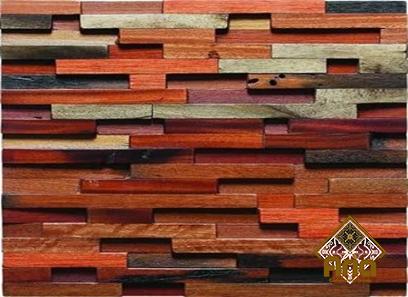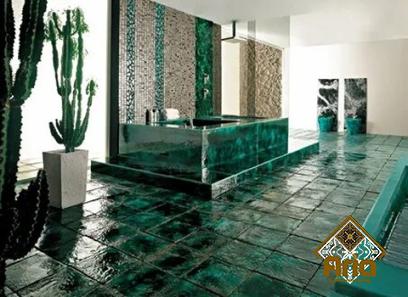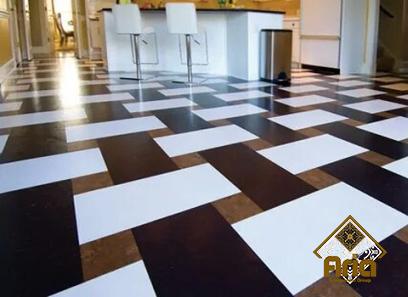Ceramic tile is a popular choice for both residential and commercial spaces due to its durability, versatility, and aesthetic appeal. Whether you’re installing ceramic tile in your kitchen, bathroom, or any other area in your home, it’s important to properly seal the tile to protect it from stains, water damage, and daily wear and tear. In this article, we’ll explore the benefits of sealing ceramic tile, the different types of sealers available, and how to properly seal your ceramic tile to ensure its longevity and beauty for years to come. Why Seal Your Ceramic Tile? Sealing ceramic tile is essential for maintaining its appearance and functionality over time. Ceramic tile is a porous material, meaning it can easily absorb liquids, dirt, and other contaminants if left untreated. Sealing the tile creates a protective barrier that helps prevent these substances from seeping into the tile and causing permanent damage. One of the primary reasons to seal ceramic tile is to prevent stains. In high-traffic areas such as kitchens and bathrooms, spills are inevitable. Without proper sealing, liquids like coffee, wine, or cooking oils can seep into the tile, leaving unsightly stains that are difficult to remove. By applying a sealer, you can prevent these substances from penetrating the tile and make cleanup a breeze. In addition to stain prevention, sealing ceramic tile also helps protect it from water damage. Areas like bathrooms and showers are constantly exposed to moisture, which can lead to mold and mildew growth if the tile is not properly sealed. A sealer creates a waterproof barrier that helps prevent water from seeping into the grout and tile, reducing the risk of water damage and prolonging the life of your ceramic tile.

.
 Types of Sealers for Ceramic Tile There are several types of sealers available for ceramic tile, each with its own unique properties and benefits. The most common types of sealers include penetrating sealers, topical sealers, and enhancing sealers. Penetrating sealers are absorbed into the pores of the tile, creating a protective barrier that repels water and stains. These sealers are ideal for unglazed ceramic tile, as they provide a natural look while still offering excellent protection. Penetrating sealers are also breathable, allowing moisture to escape from the tile while preventing liquid penetration. Topical sealers, on the other hand, sit on the surface of the tile and form a protective coating that repels stains and moisture. These sealers are easy to apply and are available in a variety of finishes, from matte to glossy. Topical sealers are ideal for glazed ceramic tile, as they enhance the tile’s appearance while providing protection against stains and water damage.
Types of Sealers for Ceramic Tile There are several types of sealers available for ceramic tile, each with its own unique properties and benefits. The most common types of sealers include penetrating sealers, topical sealers, and enhancing sealers. Penetrating sealers are absorbed into the pores of the tile, creating a protective barrier that repels water and stains. These sealers are ideal for unglazed ceramic tile, as they provide a natural look while still offering excellent protection. Penetrating sealers are also breathable, allowing moisture to escape from the tile while preventing liquid penetration. Topical sealers, on the other hand, sit on the surface of the tile and form a protective coating that repels stains and moisture. These sealers are easy to apply and are available in a variety of finishes, from matte to glossy. Topical sealers are ideal for glazed ceramic tile, as they enhance the tile’s appearance while providing protection against stains and water damage.
..
 How to Seal Ceramic Tile Sealing ceramic tile is a straightforward process that can be done easily with the right tools and materials. Before sealing your tile, it’s essential to prepare the surface properly to ensure the sealer adheres correctly and provides maximum protection. Start by cleaning the ceramic tile thoroughly with a mild detergent and warm water to remove any dirt, grime, or residues. Use a soft brush or sponge to scrub the tile gently, and rinse with clean water to remove any cleaning solution. Next, allow the tile to dry completely before applying the sealer. It’s essential to choose a sealer that is specifically designed for ceramic tile and follows the manufacturer’s instructions for application. Use a clean, dry cloth or a brush to apply the sealer evenly to the tile, working in small sections to ensure complete coverage.
How to Seal Ceramic Tile Sealing ceramic tile is a straightforward process that can be done easily with the right tools and materials. Before sealing your tile, it’s essential to prepare the surface properly to ensure the sealer adheres correctly and provides maximum protection. Start by cleaning the ceramic tile thoroughly with a mild detergent and warm water to remove any dirt, grime, or residues. Use a soft brush or sponge to scrub the tile gently, and rinse with clean water to remove any cleaning solution. Next, allow the tile to dry completely before applying the sealer. It’s essential to choose a sealer that is specifically designed for ceramic tile and follows the manufacturer’s instructions for application. Use a clean, dry cloth or a brush to apply the sealer evenly to the tile, working in small sections to ensure complete coverage.
…
 Maintaining Sealed Ceramic Tile Once you’ve sealed your ceramic tile, proper maintenance is essential to ensure its longevity and effectiveness. While sealed tile is more resistant to stains and water damage, it’s essential to clean and maintain it regularly to preserve its appearance and functionality. To clean sealed ceramic tile, use a mild detergent and warm water to remove dirt, dust, and spills. Avoid harsh chemicals and abrasive cleaners, as these can damage the sealer and the tile itself. Use a soft brush or mop to clean the tile gently, and rinse with clean water to remove any cleaning residue. In high-traffic areas, such as kitchens and bathrooms, consider using a neutral pH cleaner designed specifically for sealed ceramic tile. These cleaners are gentle yet effective at removing stubborn stains and grime without damaging the sealer or the tile. Additionally, be mindful of heavy furniture, sharp objects, and abrasive materials that can scratch or chip the sealer and the tile. Use furniture pads or coasters to protect the tile from scratches and dents, and avoid dragging heavy items across the tile surface. By following these simple maintenance tips and regularly cleaning and protecting your sealed ceramic tile, you can enjoy its beauty and functionality for years to come.
Maintaining Sealed Ceramic Tile Once you’ve sealed your ceramic tile, proper maintenance is essential to ensure its longevity and effectiveness. While sealed tile is more resistant to stains and water damage, it’s essential to clean and maintain it regularly to preserve its appearance and functionality. To clean sealed ceramic tile, use a mild detergent and warm water to remove dirt, dust, and spills. Avoid harsh chemicals and abrasive cleaners, as these can damage the sealer and the tile itself. Use a soft brush or mop to clean the tile gently, and rinse with clean water to remove any cleaning residue. In high-traffic areas, such as kitchens and bathrooms, consider using a neutral pH cleaner designed specifically for sealed ceramic tile. These cleaners are gentle yet effective at removing stubborn stains and grime without damaging the sealer or the tile. Additionally, be mindful of heavy furniture, sharp objects, and abrasive materials that can scratch or chip the sealer and the tile. Use furniture pads or coasters to protect the tile from scratches and dents, and avoid dragging heavy items across the tile surface. By following these simple maintenance tips and regularly cleaning and protecting your sealed ceramic tile, you can enjoy its beauty and functionality for years to come.











Your comment submitted.